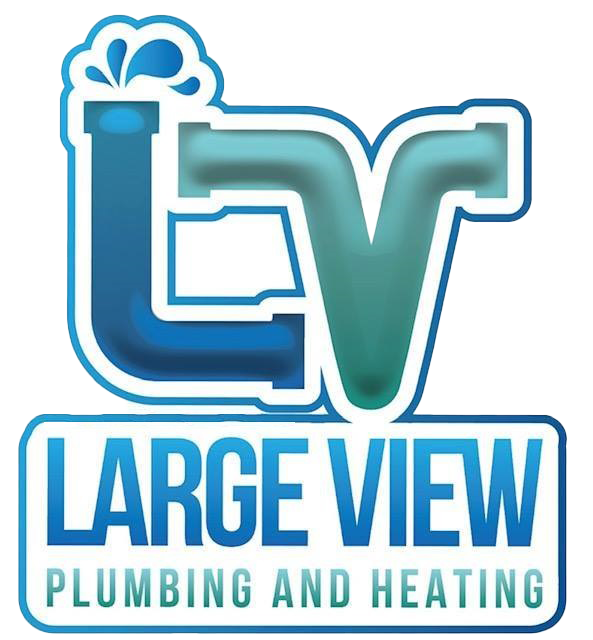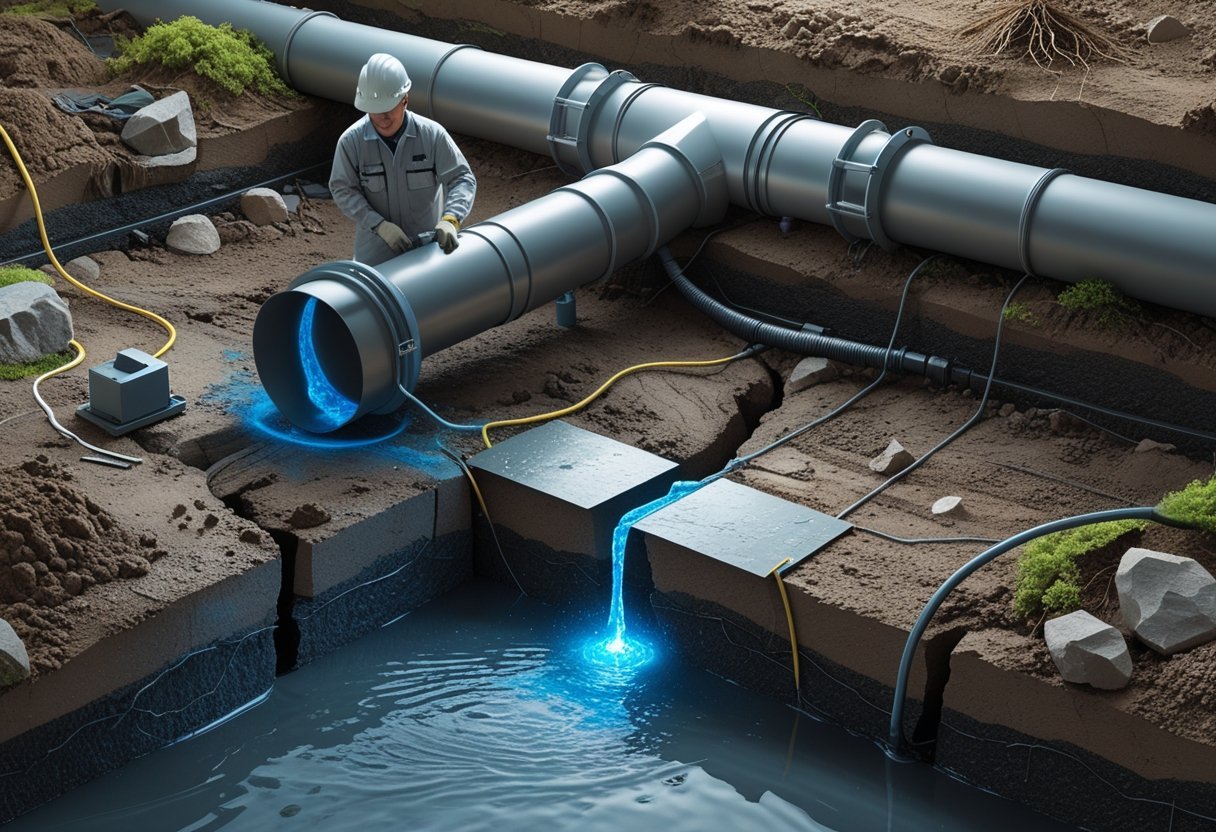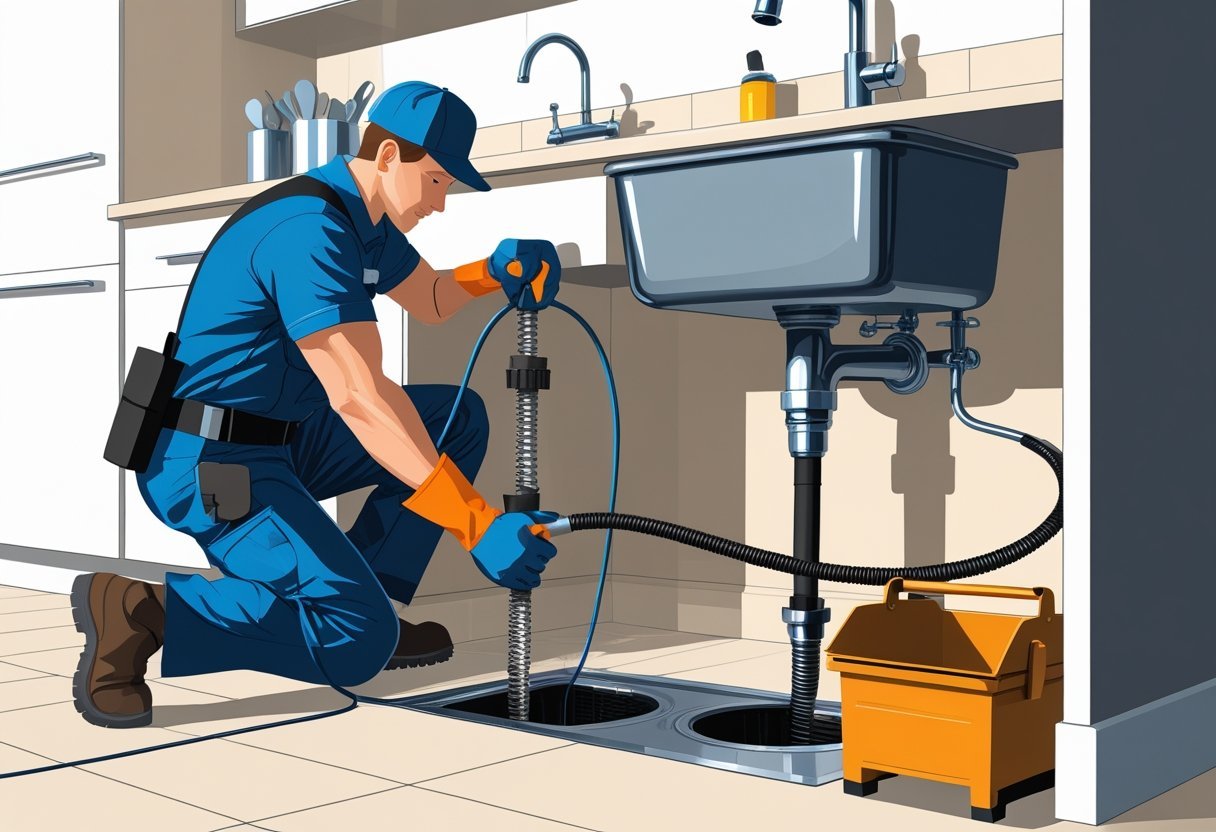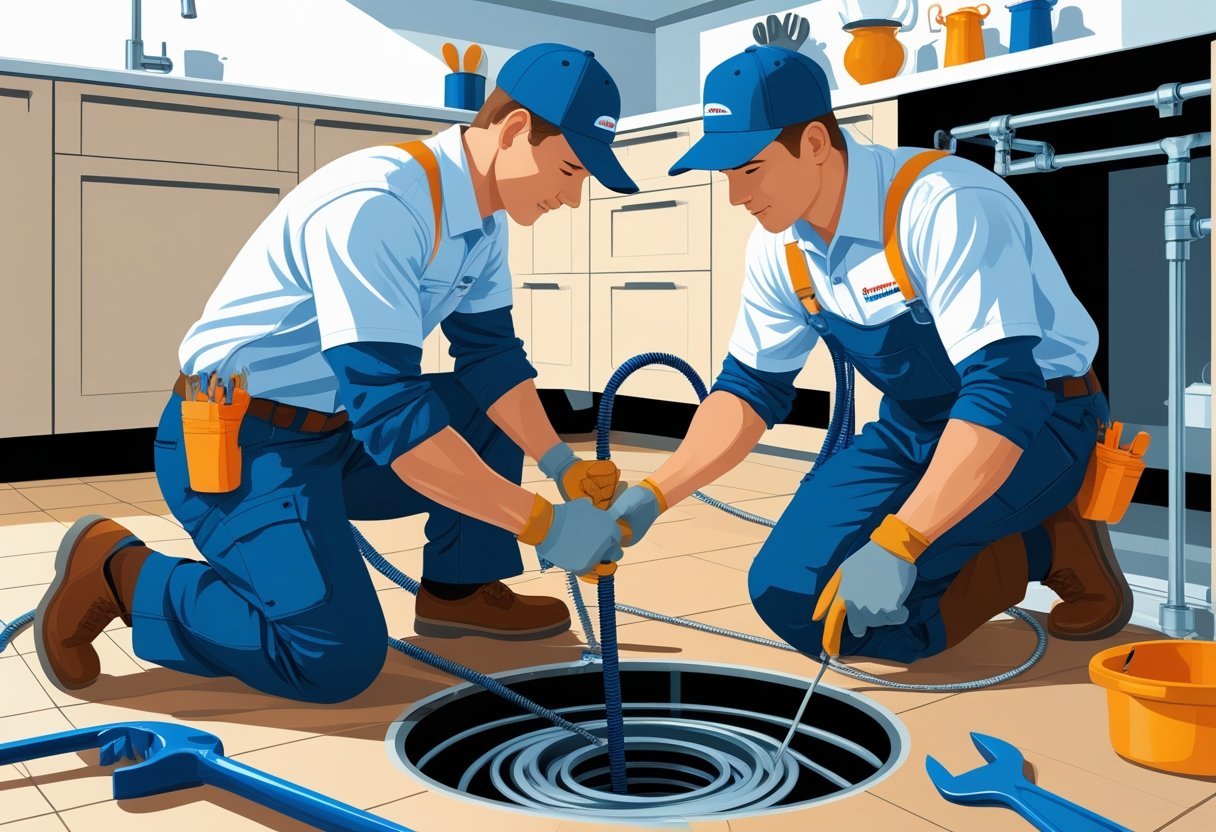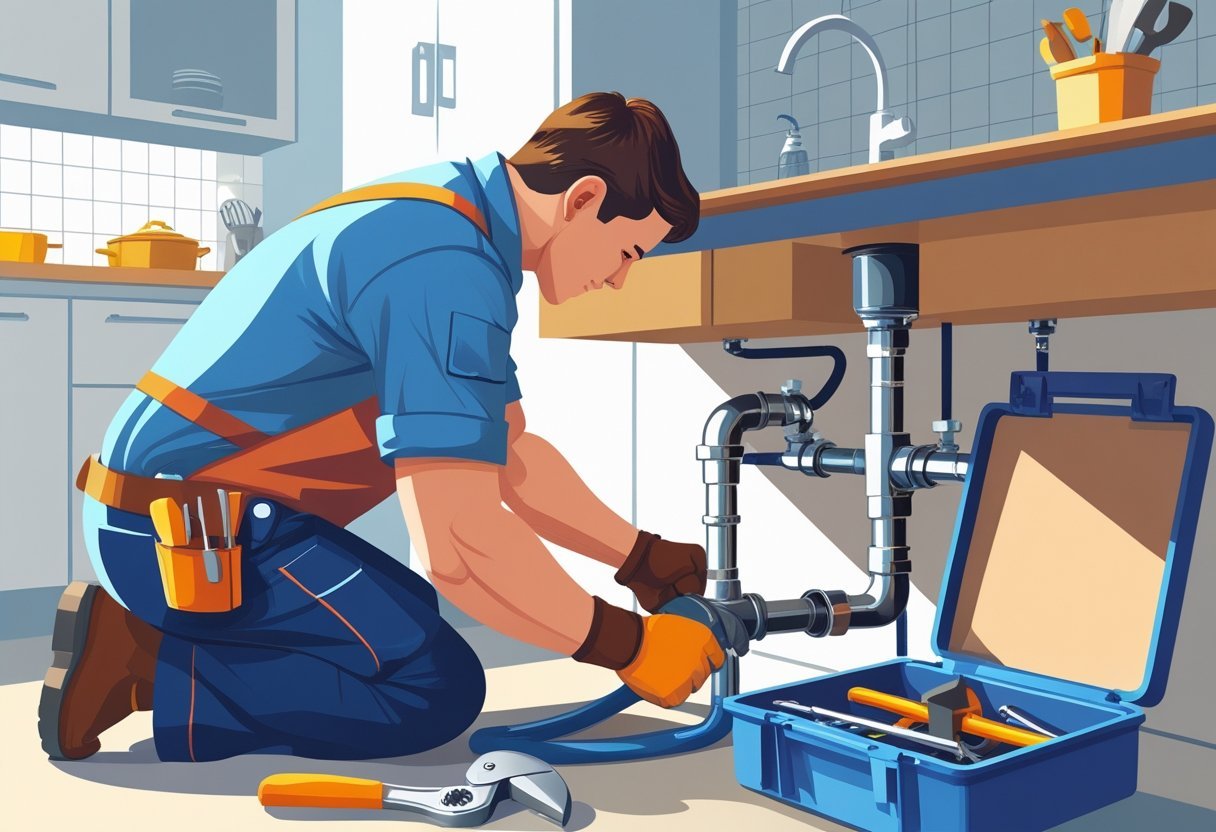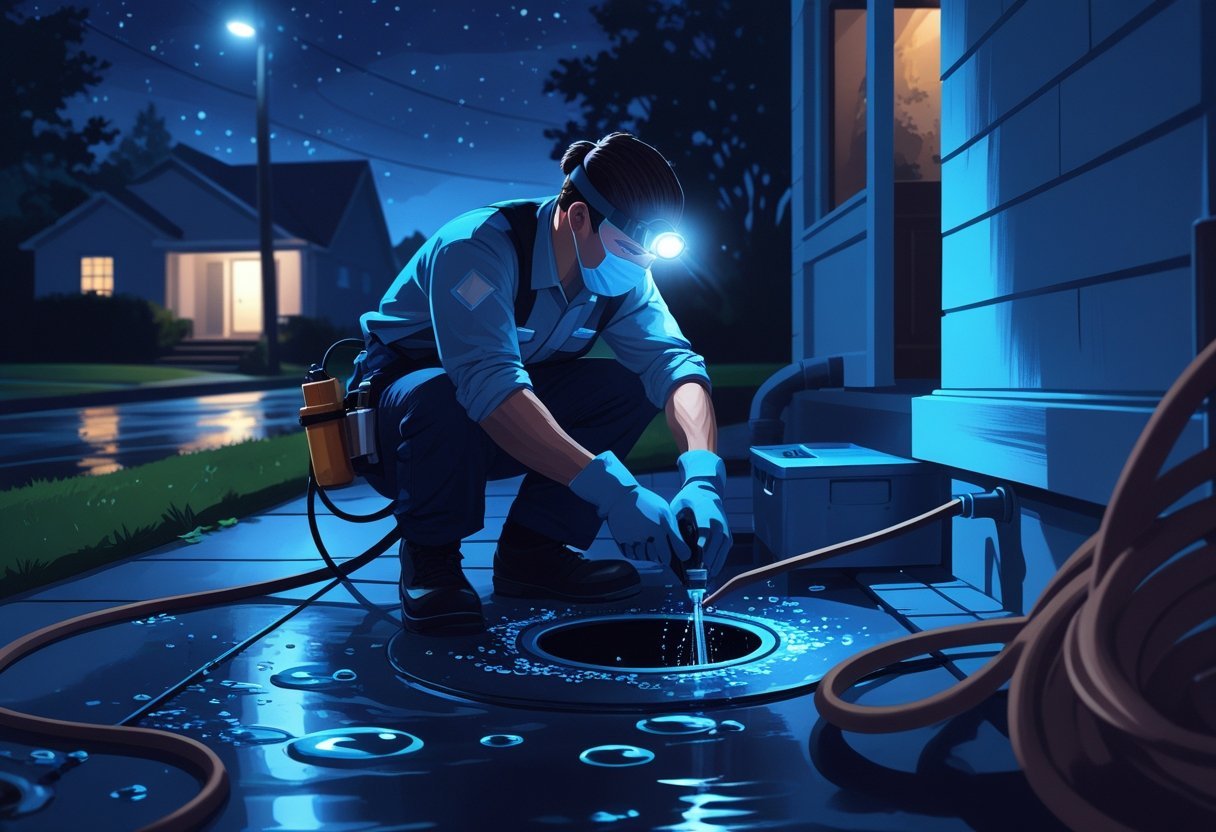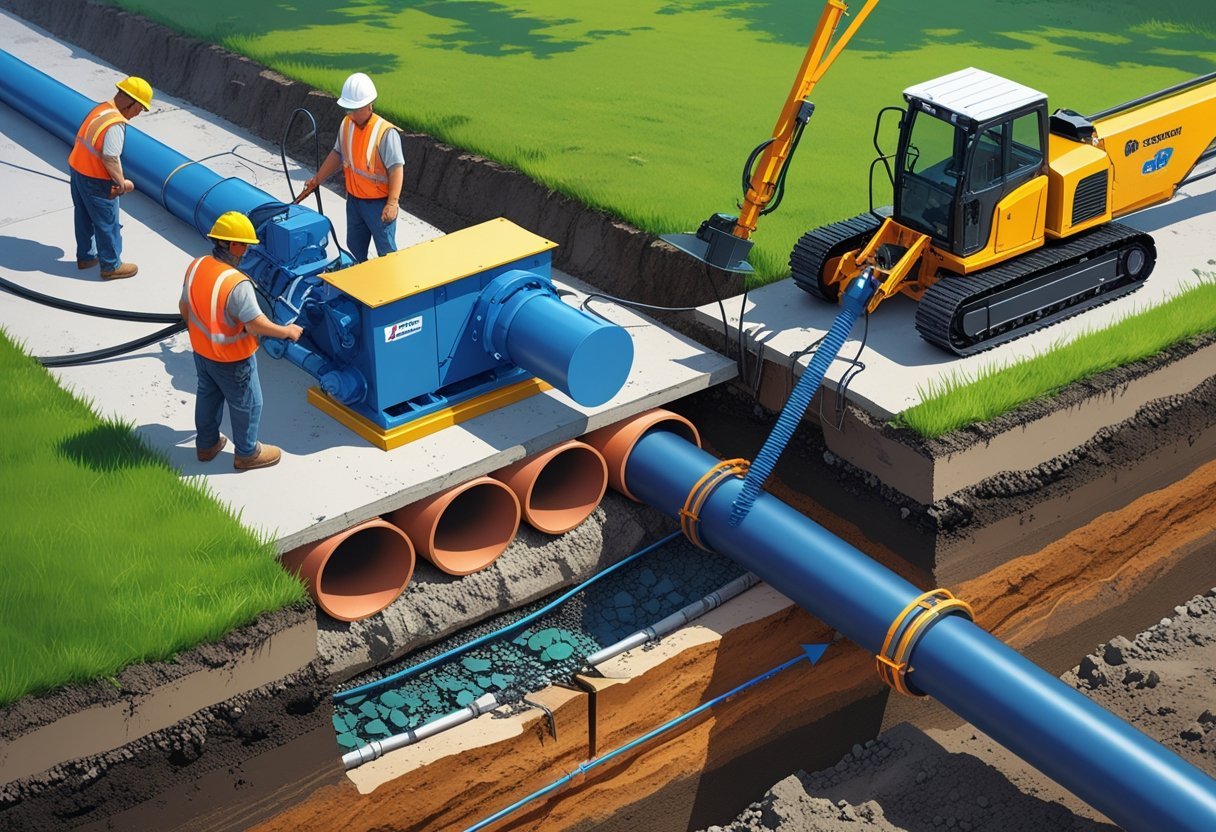When it comes to maintaining the integrity of your plumbing system, professional pipe inspection services are essential. These inspections identify problems early, prevent costly repairs, and extend the life of your pipes by detecting leaks, corrosion, or blockages before they escalate. Ensuring your pipes are in good condition protects your property and keeps your plumbing running efficiently.
Choosing a trusted provider like Large View Plumbing & Heating means you benefit from over 10 years of experience and modern inspection techniques tailored to your needs. Their skilled team uses advanced tools and methods to deliver accurate assessments and personalized solutions, giving you confidence in the safety and reliability of your system.
With trusted expertise and a strong commitment to customer satisfaction, Large View Plumbing & Heating makes pipe inspection straightforward and effective. Whether you need routine maintenance or detailed diagnostics, they focus on clear communication and thorough service to help you protect your home or business.
Overview of Professional Pipe Inspection Services
Professional pipe inspection services help you maintain the safety, reliability, and efficiency of your plumbing and pipeline systems. These services detect problems early, minimize costly repairs, and extend the life of your pipes using advanced tools and methods.
Purpose and Importance
The main goal of pipe inspection is to identify issues such as corrosion, blockages, leaks, and structural weaknesses before they cause major failures. Detecting these problems early helps prevent water contamination and health hazards. Maintaining pipe integrity also ensures compliance with safety and environmental regulations.
By investing in regular inspections, you reduce emergency repair costs and downtime. Companies like Large View Plumbing & Heating understand the value of routine inspections, especially for homes and businesses on the North Shore of Massachusetts. Keeping your pipes in good condition protects water quality and guarantees consistent system performance.
Key Technologies Used
Modern pipe inspections use various advanced technologies to detect pipe conditions without extensive disruption. Common methods include:
- Video camera inspections: Small, waterproof cameras navigate inside pipes, allowing visual assessment of blockages, cracks, or corrosion.
- Ultrasonic testing (UT): Measures wall thickness and detects corrosion or thinning by bouncing sound waves through pipe material.
- Non-destructive testing (NDT): Includes techniques like magnetic particle and dye penetrant inspections to identify surface and subsurface defects.
- Infrared thermography: Detects temperature changes indicating leaks or flow irregularities.
These technologies provide accurate data, helping professionals design targeted maintenance or repair plans. Large View Plumbing & Heating uses such tools to deliver precise diagnostics and minimize invasive procedures.
Types of Pipes Inspected
Pipe inspection services cover a wide range of pipe types used in residential, commercial, and industrial settings. Typical examples include:
- Water supply pipes: Finding corrosion or leaks here is critical to ensure safe drinking water.
- Sewer and drainage pipes: Inspections help detect blockages and structural damage that cause backups or contamination.
- Gas pipelines: Integrity checks prevent leaks that pose fire or explosion risks.
- Industrial and process pipes: These require rigorous inspection to maintain safety and meet regulatory standards.
Each pipe type demands specific inspection techniques based on materials like PVC, steel, cast iron, or copper. Providers like Large View Plumbing & Heating tailor their approach to your system’s needs, ensuring thorough evaluation and protection of your infrastructure.
Core Methods and Equipment
Effective pipe inspection relies on precise data collection and thorough analysis to identify defects or blockages. Accurate imaging, detailed mapping, and advanced testing techniques are essential to maintain pipeline integrity and prevent costly failures.
CCTV and Digital Scanning
CCTV inspection uses specialized cameras inserted into pipes to provide real-time visual information. This method is ideal for detecting cracks, corrosion, blockages, and joint separations in sewer, water, and heating pipes.
You will benefit from high-quality digital scans that reveal pipe conditions with clarity, reducing guesswork during repairs or maintenance. These cameras often include lighting and pan-tilt capabilities, enabling comprehensive views of pipe interiors, even around bends and joints.
Digital scanning supplements CCTV by creating precise images and videos for documentation and analysis. This helps track changes over time, which is crucial for proactive maintenance. Companies like Large View Plumbing & Heating use these tools to diagnose issues without excavation, saving time and cost.
3D Pipe Mapping
3D pipe mapping generates a detailed three-dimensional model of your pipeline system. Using technologies like laser scanning or ultrasonic sensors, it accurately measures pipe diameter, shape, and internal anomalies.
This method is particularly useful when dealing with complex or aging piping networks. A 3D map helps you visualize hidden damages, dents, or deformations that are not easily detected by conventional cameras.
Because it provides exact spatial data, 3D mapping supports smarter planning for repairs, rehabilitation, or replacements. With over 10 years of experience, Large View Plumbing & Heating integrates 3D mapping to offer customized solutions for your heating and plumbing infrastructures.
Non-Destructive Testing
Non-Destructive Testing (NDT) covers a range of techniques that evaluate your pipes without causing damage. Common NDT methods include ultrasonic testing, magnetic flux leakage, and radiography.
Ultrasonic testing uses high-frequency sound waves to detect material thickness and corrosion. Magnetic flux leakage identifies cracks or metal loss by detecting changes in magnetic fields. Radiography employs X-rays or gamma rays to produce detailed images of internal pipe conditions.
These methods ensure you can locate weak points or defects early while maintaining pipeline operation. NDT is essential for compliance with safety standards and extends the useful life of your pipelines through early intervention.
Inspection Processes and Procedures
Professional pipe inspection services follow a structured approach to ensure thorough evaluation, safety, and clear documentation. This process includes planning, controlling risk on-site, and accurate data reporting to help you maintain the integrity and safety of your piping systems.
Initial Assessment and Planning
The inspection begins with a detailed review of your piping system’s design, materials, and usage history. Inspectors identify critical sections, known problem areas, and regulatory standards to comply with, such as ASME B31.3 for process piping. This helps tailor the inspection scope and methods to your specific needs.
You’ll receive a plan outlining the inspection techniques to be used—such as visual, ultrasonic, or radiographic testing—along with the schedule and equipment required. Planning also involves securing approvals, including welding procedure specifications if welding inspection is needed. Solid preparation minimizes downtime and unexpected issues during inspection.
On-site Safety Measures
Safety is a top priority during pipe inspections. Inspectors ensure that all personnel follow industry standards and site-specific safety protocols to protect workers and your asset. This includes using personal protective equipment (PPE), clear hazard identification, and following confined space entry procedures if applicable.
You can expect coordination to minimize interference with your operations. Inspectors, like those at Large View Plumbing & Heating, are trained to handle emergencies quickly and maintain safe work zones throughout the inspection process. Controlling risk on-site also means environmental protection measures are enforced where necessary.
Data Collection and Reporting
Accurate data collection is critical for evaluating your piping system’s condition. Inspectors use non-destructive testing (NDT) technologies to detect corrosion, cracks, weld defects, and other flaws without damaging your pipes. Techniques may include magnetic particle inspection, ultrasonic testing, and hydrostatic pressure testing.
Collected data is documented in detailed reports that include photographic evidence, measurements, and an assessment of pipe integrity. You’ll receive actionable recommendations based on these findings. Professional reporting helps you prioritize maintenance, meet compliance, and avoid costly failures in the future. Large View Plumbing & Heating ensures transparent communication and thorough documentation for every project.
Application Areas and Industry Use Cases
Professional pipe inspection services play a critical role in maintaining safety, performance, and compliance across diverse sectors. These inspections help you identify defects early, prevent costly failures, and ensure your systems operate efficiently under regulatory requirements.
Municipal and Utility Systems
In municipal and utility settings, pipe inspections focus on water supply, sewage, and stormwater systems. You need thorough assessments to detect corrosion, leaks, or blockages that can disrupt service or contaminate water sources.
Regular inspections help avoid costly emergency repairs and environmental violations. Technologies like CCTV cameras and leak detection equipment allow precise diagnostics of underground pipes without invasive digging. Municipalities rely on these inspections to safeguard public health and maintain infrastructure longevity.
Large View Plumbing & Heating offers advanced pipe inspection services to help you maintain these systems effectively in North Shore, Massachusetts.
Oil, Gas, and Industrial Pipelines
The oil, gas, and industrial sectors demand the highest integrity in pipelines due to safety risks and environmental consequences. You must ensure that pipelines meet rigorous compliance standards through periodic non-destructive testing, welding inspections, and coating evaluations.
Inspections can detect cracks, corrosion, or mechanical damage early, reducing the risk of leaks or failures. Methods include ultrasonic testing, radiography, and advanced NDT techniques. Industrial pipelines also require metallurgical analysis to confirm material specifications and withstand harsh operational conditions.
Failing to properly inspect and maintain these pipelines can lead to significant safety hazards and operational downtime.
Commercial and Residential Properties
For commercial and residential buildings, pipe inspections ensure proper function and prevent water damage, mold growth, or contamination. You might need inspections in older buildings to assess pipe condition or after repairs to verify integrity.
Inspections typically use video inspection tools to identify clogs, corrosion, or joint issues inside pipes without intrusive digging. These services are vital before property transactions or remodeling projects, giving you a clear understanding of system health.
Local providers like Large View Plumbing & Heating can guide you through maintaining safe and reliable piping systems in your home or office.
Construction and Infrastructure Projects
During construction and infrastructure projects, pipe inspection is essential for quality control and safety compliance. You need to verify that newly installed piping meets design standards and passes pressure tests before commissioning.
Inspections include weld quality checks, coating assessments, and dimensional verification to ensure pipes are defect-free and ready for service. Periodic inspections during construction can identify faults early, preventing costly rework or failures after project completion.
This careful monitoring supports the integrity of pipelines in roads, bridges, and industrial plants, helping you meet contractual and regulatory requirements reliably.
Benefits of Hiring Professional Pipe Inspection Experts
Regular pipe inspections conducted by professionals ensure early problem detection, reliable assessments, and effective maintenance strategies. These inspections help you avoid unexpected failures and costly emergency repairs by identifying issues before they escalate.
Accuracy and Reliability
When you hire professional pipe inspection experts, you gain access to advanced technology and skilled technicians who deliver precise and dependable evaluations. Tools like CCTV cameras, acoustic sensors, and robotic crawlers enable detailed views inside your pipes to detect corrosion, leaks, blockages, and structural defects that are not visible to the naked eye.
Accurate diagnostics allow for targeted repairs, preventing unnecessary disruptions or replacements. Experts from Large View Plumbing & Heating use these technologies to ensure that every inspection identifies all potential problems accurately, helping you maintain compliance with local plumbing codes and safety standards.
Preventative Maintenance Advantages
Professional inspections focus on preventing major plumbing failures before they occur. By regularly checking your pipes, experts can uncover minor issues such as early corrosion or small leaks that, if left unattended, might lead to serious damage.
This preventative approach extends the lifespan of your plumbing system and helps maintain water quality by detecting contamination risks early. Large View Plumbing & Heating offers tailored maintenance plans that emphasize early detection and timely intervention, reducing the likelihood of emergency repairs and system downtime.
Cost Savings and Risk Reduction
Investing in professional pipe inspections saves you money over time by avoiding costly repairs and replacements. Early detection minimizes damage and the need for disruptive construction work, which can be expensive and inconvenient.
In addition to saving on repair costs, professional inspections reduce health and safety risks linked to outdated or damaged pipes. You protect both your property and the occupants by ensuring the integrity of your water supply and preventing hazards such as leaks, mold, or contamination. Engaging trusted professionals guarantees a thorough inspection that safeguards your investment and peace of mind.
For expert guidance on maintaining your plumbing system and reducing risk, consider scheduling a comprehensive pipe inspection with Large View Plumbing & Heating in North Shore, Massachusetts.
Frequently Asked Questions
Understanding the costs, standards, and maintenance benefits of pipe inspections helps you make informed decisions. Regular inspections can prevent costly repairs and extend the life of your plumbing system.
What is the cost range for professional pipe inspection services?
The cost for pipe inspections varies widely depending on the method and scope. Basic inspections can start around $100, while thorough assessments using advanced camera technology may cost several hundred dollars or more.
How much does a sewer line camera inspection typically cost?
A standard sewer line camera inspection usually ranges between $250 and $600. Prices depend on the length of the pipe and the complexity of the inspection process.
What factors influence the price of plumbing camera inspections?
Several factors affect pricing: pipe material, inspection length, accessibility, technology used, and whether repairs are needed afterward. Difficult locations or deeper pipes generally increase costs.
What are the standards and certifications for pipeline inspection?
Pipeline inspections must comply with industry standards like NASSCO certification and ASTM guidelines. These ensure consistent quality and accurate results for leak detection and condition assessments.
Are there benefits to regular plumbing inspections for maintenance purposes?
Yes. Regular inspections help identify blockages, corrosion, and leaks early. This prevents major failures, reduces emergency repairs, and improves system efficiency.
How often should sewer line inspections be conducted for residential properties?
For most homes, sewer line inspections every 2 to 3 years are recommended. Older properties or those with tree roots nearby may require more frequent checks.
Large View Plumbing & Heating offers expert advice and reliable inspections using modern technology to help you maintain your plumbing system effectively.
